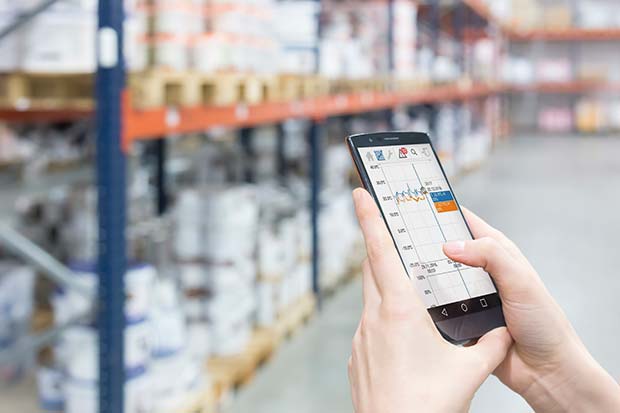Temperature and humidity monitoring are critically important for warehouse and storage management. The goods must be stored in the right conditions in order to prevent spoilage, damage, and substantial losses.
 For example, electronic devices require monitoring of humidity levels inside the storage area in order to avoid damaging of the internal electrical components.
For example, electronic devices require monitoring of humidity levels inside the storage area in order to avoid damaging of the internal electrical components.
Pharmaceutical products are another example where temperature and humidity levels are extremely important.
Products are usually stored between 2-8 degrees Celsius. Any alterations in the desired temperature can have devastating effects on the chemical stability of the products and result in substantial losses.
The agro-food industry is well known for needing temperature monitoring in their facilities. As there are fewer preservatives and additives in our foods [1], therefore products become more sensitive to sudden changes in temperature and become more vulnerable to moisture. To avoid spoilage and financial losses it is critically important to have monitoring systems implemented in storage facilities where such goods are stored.
One of the biggest breakthroughs in the last few years have been wireless, low power wide area networks (LPWAN) that have fostered the development of wireless sensors and industrial IoT applications overall.
Wireless sensor systems can be used to measure anything from temperature and humidity to motion and pressure, therefore being applicable in a variety of industries including warehouse and storage facilities as well as logistics overall.
The new streams of real-time value data provided by the sensors can give new insight into the inner workings of the existing processes, their effectiveness, and faults. The automated collection of data helps to improve quality control, monitor the ongoing processes and allows to immediately deal with urgent issues.
Wireless sensors can be deployed within multiple kilometre range from the base station. The sensors send data readings to the base station and can function up to 10 years without battery replacement.
An essential component of the industrial IoT monitoring systems is data analysis tools.
The software helps view, analyse and compare data in real time, set thresholds for alarms, rename sensors, export data to help keep the pulse on the ongoing and optimize processes when necessary. This helps businesses to stay alert and helps monitor various sites simultaneously.
The industrial IoT monitoring systems provide time and money savings for businesses. With easy, wireless deployment the industrial IoT systems exclude extensive planning or timeconsuming installations.
Constant monitoring also allows for preventive action to be taken when it is needed. It has never been easier and more cost-effective to implement industrial IoT solutions!
Learn more about wireless monitoring solutions for warehouses today, visit www.aranet.com [1] www.huffingtonpost.com/ entry/11-companies-that-planto– remove-artificial-flavorsbefore- 2019_us_ 55b6a777e4b0074ba5a5d327
ARANET




Comments are closed.